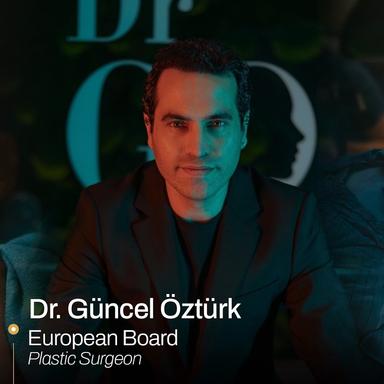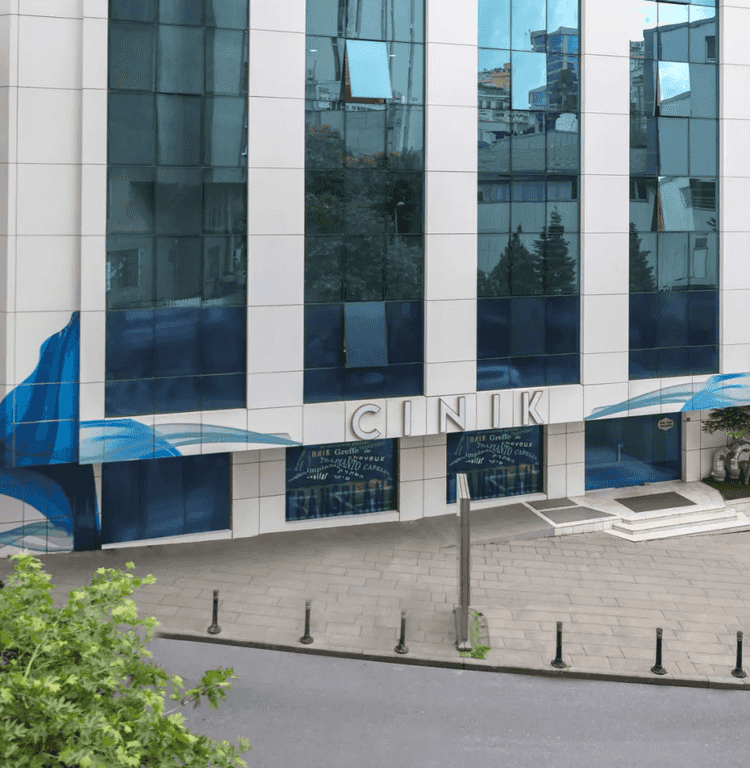PRP for Hair Before and After: How It Feels, Week by Week

Prathyusha Itikarlapalli
- Content Writer

Guncel Ozturk, MD, FEBOPRAS
- Reviewed by

Table of contents
Key Takeaways
- PRP hair therapy is a reliable approach for treating the early to middle stages of baldness in men and women. A suitable candidate needs to have a healthy scalp and an adequate platelet count.
- Being consistent with the schedules for PRP treatment for hair before and after can help ensure continued results. The first three PRP sessions span over 4-5 weeks, followed by the annual maintenance sessions.
- Visible results from PRP hair treatment typically appear after the first three sessions, approximately 3-6 months after the initial session. However, candidates notice an improvement in scalp health, with their hair becoming shinier within 4 weeks after the first dose.
PRP Hair Treatment
PRP hair treatment involves extracting the patient's blood to separate the platelet-rich plasma. This plasma is rich in platelets, cytokines, and growth factors. It boosts hair growth when injected into the areas of the scalp experiencing balding or hair thinning. The active components in plasma are well-known in orthopedic and sports medicine.[1] The regenerative ability of the separated plasma boosts wound and tissue healing. Its application in the field of dermatology and cosmetics is, in fact, gaining popularity. Especially the PRP hair loss treatment, a minimally invasive, simple, and safe procedure. It is indeed an effective alternative to invasive restoration techniques, such as hair transplantation. While it works for both male and female pattern hair loss, the results aren’t instant after initial treatment. Hair regrowth following PRP treatment is a gradual process. Below, we detail the procedure for a better understanding.
How PRP Works on Hair?
PRP therapy injections are effective in treating mild to moderate baldness. The procedure involves injecting a tiny volume of PRP into the affected area of the scalp during the initial treatment. The active components that boost hair regrowth are the growth factors and cytokines present in the platelets. These induce hair follicle proliferation and extend the active growth phase of the existing hair follicles. They also promote the development of new blood vessels, allowing the new growth of hair by receiving enriched nourishment and a rich blood supply. They create a positive microenvironment for active hair growth. As a result, hair fall will slow down, and you will also start to notice tiny hair growing in the bald areas after receiving the PRP injection.
Where To Get PRP Injections for Hair Loss?
PRP injections for hair loss aren’t purchased as commercial preparations. Certified dermatologists prepare the platelet-rich plasma using the patient's blood. You should look for qualified dermatologists or hair restoration specialists, as well as certified hair transplantation and cosmetology clinics where the procedure will be performed. Choose clinics that prioritize patient safety and sterility. Those using cutting-edge technology and single-use needles, as well as those relying on a medical-grade setting, can ensure better results. Check out the hair density photos of patients who underwent PRP therapy before making choice.
How To Prepare PRP for Hair Loss?
Dermatologists draw a blood sample from your arm. They centrifuge it to separate the platelet-rich plasma, platelet-poor plasma, and red blood cells. Typically, a centrifuge is a device that separates components based on density. So, when dermatologists spin your blood sample at high speed, the denser particles, such as the red blood cells (RBCs), settle to the bottom, while the plasma separates with less dense platelets. Hair transplant specialists collect the platelet-rich plasma and inject it into mild and moderate bald areas to stimulate hair growth.
PRP Benefits for Hair
PRP therapy for hair loss is an effective method to reverse the receding hairline or widening part. It is a suitable option for treating both male and female pattern baldness. Below, we list all the benefits.
- It activates the dormant hair follicles and promotes hair regrowth.
- The plasma components prolong the active growth phase of the existing hair follicles, thickening the hair strands, inducing new growth, and reducing hair fall.
- PRP injections contain growth factors and cytokines that encourage new blood vessel formation, enhancing scalp health.
- It is a minimally invasive, simple procedure with a very short preparation time.
- This can be used as a single or combined approach (alongside hair transplantation and oral medications) to treat hair loss.
- PRP injections for hair loss before and after have minimal side effects because the components are prepared from the patient's blood.


What’s Before PRP for Hair Treatment?
Your journey to fuller hair with PRP hair treatment begins with initial consultations. Your dermatologist or trichologist will physically examine the scalp and check if it meets the baseline requirements. They will check for the signs of a healthy scalp and assess the pattern of hair loss to verify if you meet the baseline requirements. PRP relies on the same technology irrespective of gender. While PRP for hair before and after women and PRP hair before and after men may seem just like an injection, they are quite different. It's typically because the pattern of hair loss in women varies significantly from that in men. Men typically experience hair loss beginning in the crown area, progressing to the center, or starting with a receding hairline that then deepens into the center. In women, the pattern of hair loss begins with a widening or thinning of the part. More severe hair loss in women typically presents with a sparse appearance of hair in the center of the scalp, often accompanied by a thinning of the hairline. Check out the hair transformation photos before making your clinic choice.

A thinning scalp isn’t just hair loss; it relates to the serious emotional toll it can create. Most patients complain of a loss of confidence and self-esteem. For many, it appears to be a silent struggle that affects not only their appearance but also their sense of identity. Addressing hair loss at this stage isn't just a way to deal with it, but it's also a way to improve the way you feel about yourself. If you're wondering how to get the best results from your PRP hair treatment, read on.
Getting the Best Results After PRP Hair Treatment
Ideally, patients require 3-4 PRP sessions spaced over 5-6 weeks. Regular maintenance sessions should follow the initial treatment, typically held twice a year. Achieving better hair regrowth after PRP treatment depends on several factors, including the dosage, timeline, candidacy, and severity of hair loss. Below, we elaborated on these in detail.
Why Do Dosage and PRP Hair Treatment Timeline Matter?
PRP injections work at the cellular level. They contain viable components (growth factors and cytokines) that stay active for a specific period. These active components stimulate the growth of hair follicles and blood vessel formation. Repeated PRP injections remind the follicles to sustain the active growth phase. Delaying or skipping doses will stall or regress the results. Therefore, it is essential to be consistent with PRP sessions to achieve the desired results.
How Does Candidacy and the Severity of Baldness Matter?
While PRP hair loss treatment is popular for its safety and effectiveness, not everyone can expect the same results. One should be a suitable candidate with a healthy scalp and overall body condition.[2] Furthermore, candidates in the early stages of hair loss can expect better results. On the other hand, dermatologists do not recommend PRP for individuals with any of the following conditions.
- Severe stages of baldness: PRP injections contain growth factors and cytokines that stimulate hair growth. These act on the weakened yet existing hair follicles. However, in severe stages of baldness, candidates either lose hair follicles or experience scarring. Therefore, the chances of achieving good results are quite low in the severe stages of balding.
- Unhealthy scalp: PRP injections work by encouraging tissue healing and regeneration rather than treating infections. Infections on the scalp, along with pus and inflammation, can interfere with how well the PRP is absorbed, which may reduce its effectiveness.
- Hair loss due to autoimmune reasons: For individuals suffering from autoimmune problems, PRP is unlikely to provide better results. It's because the body’s immune system attacks the hair follicles, and this would negate the positive effects that growth factors and cytokines would bring.
- Low platelet count: A good PRP is one with a high platelet count. Although it's extracted from the patient's blood, a high platelet count is still necessary to expect better results. Candidates with a low blood platelet count cannot expect better results.
Good PRP Results: What Does It Mean?
Appreciable PRP therapy results actually mean the measured noticeable improvement in hair density and volume, with increased strand thickness, along with a reduction in hair fall. It cannot be confused with commercial gimmicks, such as instant results or miraculous overnight hair growth. Hair growth after PRP therapy injections follows a stage-wise pattern. One can expect to wait 3-6 months for visible results. Below, we elaborated on the stage-wise details.
- PRP results during month 1: There will be no visible growth or hair-related improvements just after getting your first PRP injection. Many candidates experience their scalp becoming red, sore, and tender immediately after a PRP injection. Don’t worry, as this will improve gradually over the next week, and your scalp will start to feel better.
- PRP results after 1 month: The initial injections are scheduled with a 4-week interval, so you will probably get one PRP injection in one month. It's worth understanding that the PRP results after 1 session hair are not as dramatic as what you could expect during the later sessions. While it's normal not to see noticeable hair growth, you will notice a slowed rate of hair fall accompanied by an improvement in scalp health. Furthermore, your hair becomes shinier and looks healthier.
- PRP results during 3-6 months: After 3 months of PRP injection, you will finish the initial three sessions. You can expect visible hair growth, accompanied by increased volume and density. Compare your 3 month PRP for hair loss before and after photographs. You will notice the baby hair growing in and blending with the natural hairline. The tiny patches or thinned parts thicken and fill up with new hair. The PRP results after 3 sessions are indeed the most comprehensive.
- PRP results after 12 months: PRP does not cure hair loss permanently. Although the initial results are noticeable, further follow-up sessions are required for optimal outcomes. This will continually remind the hair follicles of an active growth phase. Typically, it is scheduled as two injections per year.
What To Do if PRP Hair Loss Treatment Does Not Offer the Expected Results?
No two patients can expect the same outcomes in healthcare, and PRP is not an exception. While PRP therapy is a popular method, its effectiveness may vary from candidate to candidate. Many patients compare the PRP for hair before and after pictures of other patients before proceeding with the initial treatment. In fact, it helps you gauge the effectiveness of the method. However, hair regrowth that others can attain cannot be the gold standard for you. So, if your outcome doesn't match that of your friend or colleague, don't just doubt the procedure or count it as a failure. Before doubting the procedure itself, take a moment to revisit a few key factors:
- Did you follow the full protocol as recommended?
- Were the aftercare instructions followed properly?
- Did you attend all sessions on time without delays or skipping any appointments?
These details can significantly influence the outcome. Consistency and adherence to the treatment plan are just as important as the procedure itself.
Your second alternative can be combining PRP injections with other hair fall treatment methods. You can combine it with other treatment choices, such as minoxidil and finasteride. Research findings suggest that this approach, combining PRP with minoxidil, is effective in treating male pattern baldness.[3] While some candidates combine it with hair transplantation, it is essential to discuss this with a certified hair transplant specialist or dermatologist. They will examine your scalp health and assess the intensity of your hair loss. Further, they conduct a few blood tests to assess you as a good candidate and will explain to you the pros and cons of the choice. So you can make an informed decision without much guesswork.
Final Word!
The journey of PRP for hair before and after is a gradual transformation, not an overnight fix. While the outcomes vary from person to person, consistent sessions, proper aftercare, and realistic expectations are essential for achieving noticeable improvement. From reduced hair shedding in the first month to visible regrowth in 3 to 6 months and fuller density by 12 months, PRP offers a progressive and natural path to restoring hair health. If you're considering this treatment, trust the process, stick to the schedule, and always compare your results to where you started, not someone else.
Ready to see your PRP for hair before-and-after story? Don’t just hope for better hair, take the first step toward it. Sign up with Envoy Health today to connect with trusted clinics offering expert PRP treatments, transparent pricing, and personalized care throughout your journey. Your hair deserves it, and so do you. Start your transformation with a single click.
References
Disclaimer
The information in this article is for educational purposes only and does not replace medical advice. Always consult your doctor before starting any treatments.
The initial results that you see after PRP injections for hair loss are not permanent. You will need maintenance injections for continued effectiveness. With continued efforts, PRP offers safe and effective results.
Yes, the active components, such as the growth factors and cytokines within PRP, contribute to hair regrowth. They prolong the growth phase of the existing hair follicles and boost the formation of new blood vessels. This will enhance the blood circulation within the scalp, promoting a healthy blood supply and nutrient delivery to the growing hair follicles. Overall, you will see actively growing baby hair that blends naturally with the hairline.
The PRP hair treatment isn’t solely about hair regrowth. It also relates to rejuvenation and healing. The platelets within the PRP injections begin their work immediately, and you will notice healthier-looking hair within one month after the first session. However, one needs to wait for at least three sessions, which take at least 3 months to see the visible hair regrowth results. The 3 month PRP for hair loss before and after pictures of patients treated as per protocols show noticeable results. While hair fall regresses, the formation of baby hair in the areas of hair thinning begins during this period.
PRP hair loss therapy is a viable option for individuals experiencing early to middle-stage hair loss. It can be a single or combined approach based on the patient's condition and expectations. The procedure is minimally invasive, with an affordable PRP hair treatment price. Additionally, it has minimal side effects and a quick recovery time.
While PRP for hair is safe and effective, it is essential to follow the treatment timeline consistently. Dermatologists recommend 3 PRP sessions followed by yearly maintenance sessions. One cannot expect optimal results when failing to adhere to the schedule or skipping PRP sessions.
One will require three PRP sessions within 4-5 weeks, followed by annual maintenance injections, for optimal hair regrowth. You should strictly follow the PRP schedule as recommended by the hair transplant specialist or dermatologist. The viable platelet components have a specific lifetime. To achieve continued and effective results, you need to supply your scalp with the active components.
The first three PRP injections for hair will be scheduled within 4 to 5 weeks of the initial consultation. Following this will be the maintenance sessions, which are typically held twice a year. While the initial PRP injections offer effective results, ongoing maintenance injections are still necessary for continued effectiveness.
So, we partner with the premier healthcare facilities!
Send me the list

